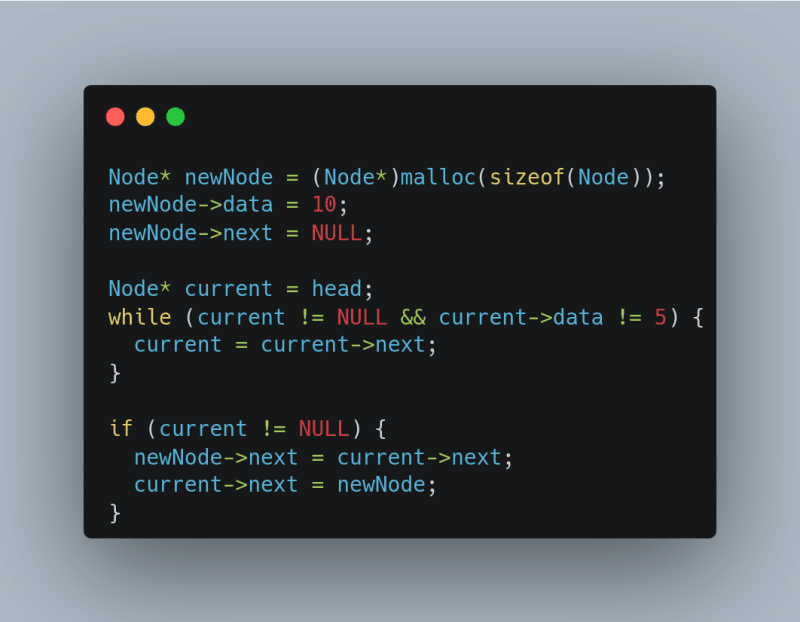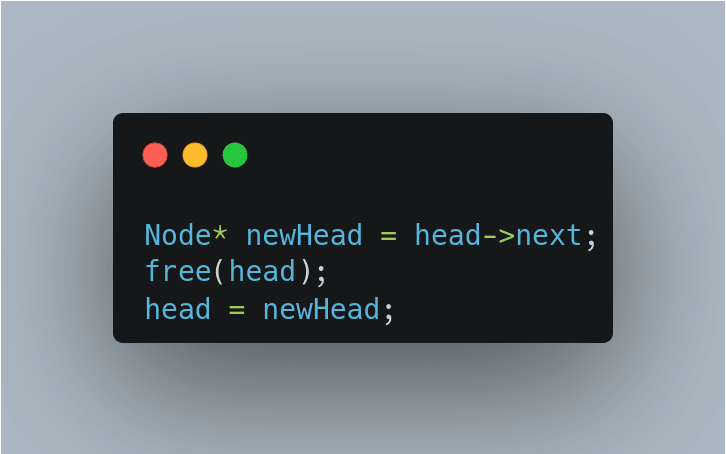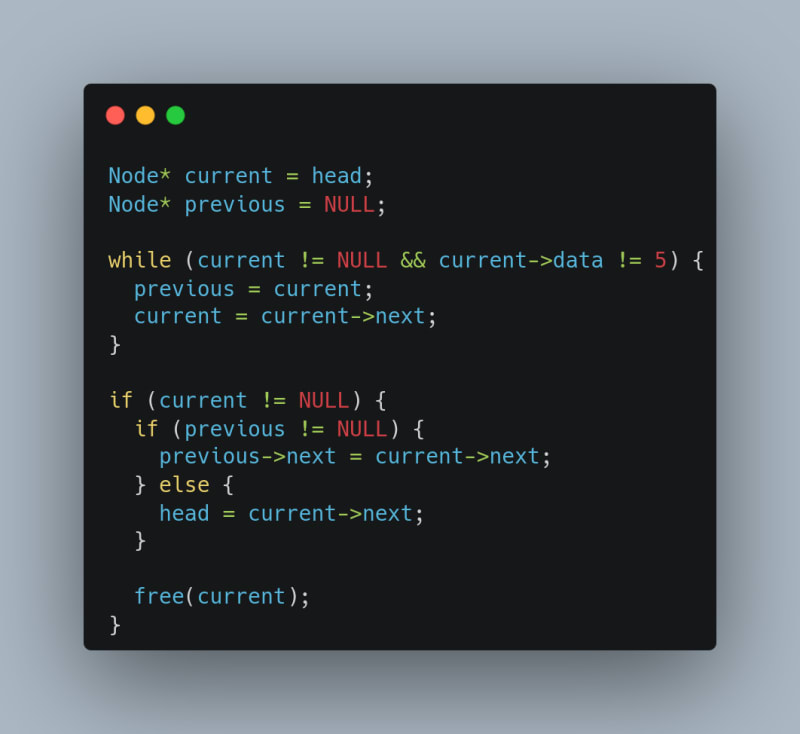We're diving into singly linked lists in C - no jargon, just plain talk. We'll show you how to create your own list, navigate it, and even kick stuff out. Whether you're a C novice or a pro, we've got your back. Short on attention span? No worries. We're spicing things up with code snippets and diagrams. 📊💡
Who's This For
If you've got C basics down, you're in. Newbie or seasoned coder, we're here for you. Plus, you're in for a treat with loads of code snippets and visuals – because learning tech is way cooler when you see it. 🎉👀
📜 Introduction
Singly Linked Lists Unwrapped
Imagine a linked list as a chain of data. Each link has a piece of info and points to the next one. They're versatile and can power stacks, queues, and graphs. But remember, they're great for some things and not for others. Memory leaks? Yeah, they're a thing. We'll cover the whole story. 🧩🔍
🚀 Why They Matter
Singly linked lists are like the Swiss Army knife of C programming. They're speedy for adding and removing stuff from the start and end. Plus, you can use them for stacks, queues, and more. They're a must-know in the C world. 🌌🛠️
📚 Singly Linked Lists Basics
The Skinny on Singly Linked Lists
Think of them as a chain of nodes. Each node has info and points to the next. The first node is the head, the last is the tail. If the head's empty, so is the list. 🚶♂️🔗
Common Operations
Inserting and Deleting 101
-
Insertion:
- At the Start: Update the head to the new node.
- At the End: Find the tail and link to the new node.
- After a Node: Plug into the middle. 📥📤
-
Deletion:
- From the Front: Update the head.
- A Specific Node: Jump over it. 🗑️🚪
-
Traversal:
- Start at the head and follow the chain. 🚶♂️🔍
There is more to explore, like searching, reversing, and merging lists. 🌐🕵️
🔗 Singly Linked List in C
Node Structure
A node has two parts: data and the next node's pointer. Simple, right? 🧩🔗
Creating a node? It's a breeze: 🛠️
To link it in, update the previous node's pointer. 🧩🔗
Insertion and Deletion
- Adding at the Start: Update the head. 🚀📤
- End of the Line: Find the tail and link in. 🛤️🚀
- Between the Links: Squeeze in. 📥📤
- Deleting the Head: Swap in the next. 🗑️🚪
- A Specific Node: Skip over. 🏃♂️🚪
Much more to explore, depending on what you need. 🚀🔥
🚶♀️ Traversal
To see it all, follow the chain:
- Start at the head.
- Hop to the next.
- Print the data. 🚶♂️🔍
🌟 Advantages and Warnings
👍 Pros:
- Dynamic: Adjusts as needed.
- Swift at Starts and Ends: Change head or tail.
- User-Friendly: C programming made simple. 🚀🌟
👎 Cons:
- Not for Random Hunting: Search starts from scratch.
- No Magic for Middle Goodbyes: You need to find and skip.
- Watch for Memory Leaks: Keep it tidy. 💣🔥
🏆 Best Use Cases:
- Stacks: Last in, first out.
- Queues: First in, first out.
- Graphs: Nodes connect like a web. 🗄️📁
🌍 Real-World Scenarios:
- Browser History: Your digital path.
- Playlist: Your music party.
- File System: Your computer's folders and files. 🌐🎵
🧩 Puzzle Pieces: Time and Space
Here's the lowdown on time and space:
| Operation | Time | Space |
|---|---|---|
| Add at Start | 🚀🎈 | Efficient |
| Add at End | Slightly Slower | Efficient |
| Add After | Slightly Slower | Efficient |
| Delete from Start | 🚀 | Efficient |
| Delete from End | Slightly Slower | Efficient |
| Delete a Node | Slightly Slower | Efficient |
| Traversal | Linear Search | Efficient |
🛠️ Pro Tips and Tricks
- Start with a dummy node for easier handling.
- Save past searches for future shortcuts.
- Consider double-linked lists if you're heavy on insertions and deletions. 🔗👍
📝 Coding Wisdom
- Meaningful names for variables and functions are the way to go.
- A touch of comments helps others understand your code.
- Thorough testing keeps surprises at bay. 🧪👨💻
📚 Bonus Resources
- Dig deeper into linked lists: Wikipedia
- Level up with doubly linked lists: Doubly Linked Lists
- Get in sync with C stacks: Stacks
- Master C queues: Queues
- Explore C graphs: Graphs
🎉 In a Nutshell
Singly linked lists are your Swiss Army knife for C. They're versatile, but like any tool, they have their quirks. So, learn the ropes and make your code dance. 💃🕺




































